
By Brendon Harre*
Cities are defined as ‘places where there is an absence of physical space between people’ (Edward Glaeser).
The replacement of the Resource Management Act (RMA) has been announced and new legislation will soon go through Parliament. The new Acts are too comprehensive for this paper to give a full overview. But I think it is helpful to understand some of the structural problems that RMA reform is trying to address.
There has been a consensus from the two major political parties in New Zealand that RMA reform is needed. The opposition National Party for instance defended the removal of “red tape” planning restrictions that the Medium Density Residential Standards Act has bought and is “open to sensible changes” so that local councils (like Christchurch City Council) do fully implement the plan changes. Experienced political commentators have indicated because of how near we are to elections that RMA reform is likely to more contested. Hopefully that doesn’t prevent a sensible and effective outcome.
Many planning rules unreasonably interfere with the normal function and purpose of cities. For instance — extremely large minimum plot sizes (especially common in the US), restrictions on building multi-family dwellings, unnecessary low height restrictions, urban growth boundaries, car parking minimums, excessive protection of character, and so on.
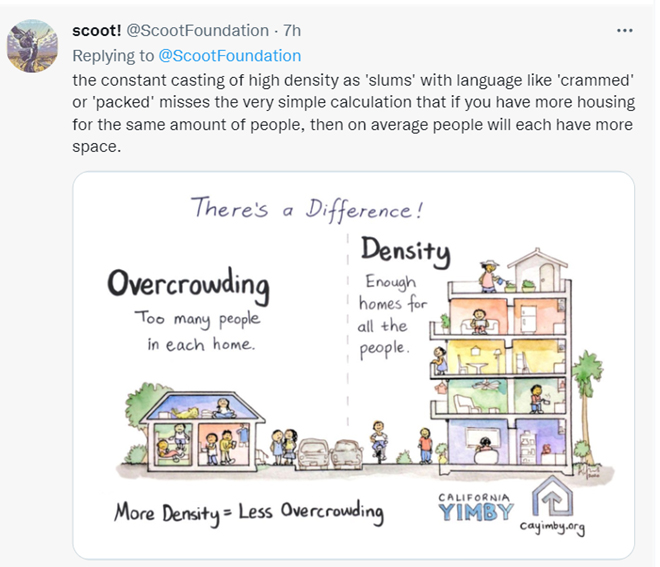
Many planning restrictions are for unreasonable reasons, such as, excluding the ‘wrong’ type of person or due to a moral panic about density or overcrowding.
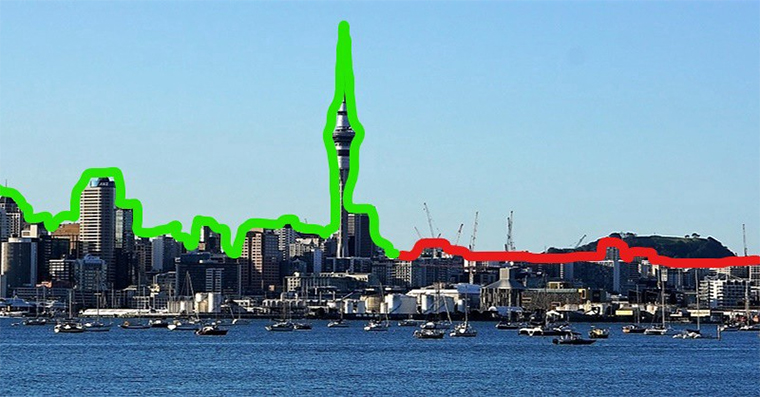
On the left in green is unconstrained Auckland city development. On the right in red is the constraining effect of planning regulation viewshaft E10. Source RNZ Is Auckland’s development hamstrung by the view?
One viewshaft planning restriction that provides a view of the Mt Eden volcano from a 800m section of motorway (where tollbooths used to be located) has made Auckland a ‘City With A Billion Dollar View’, according to a published paper by economist Geoff Cooper. This gives an indication of the high yet largely hidden cost of unreasonable planning rules.
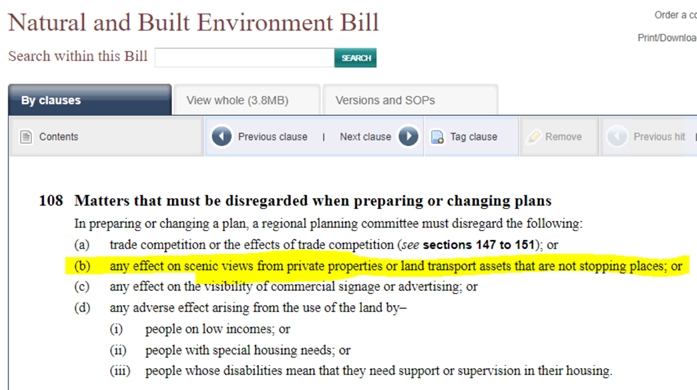
Fortunately, the new Natural and Built Environment Act will eliminate this viewshaft planning restriction.
Unreasonable planning rules are those where the benefit to society is less than the cost. For instance, it is hard to believe that the above viewshaft was more beneficial than the one-billion-dollar opportunity cost of the missing city-centre homes and businesses.
It is also unreasonable to use planning rules where there is a better alternative for managing particular externality costs. For example, congested roads and crowded public car parking could be managed by congestion road pricing and car parking metering, rather than by planning rules, such as, requiring private property owners to supply a minimum number of car parking spaces. Japan, for instance, essentially takes the first option of letting — ‘prices do the planning’ — to manage crowded streets.
Unreasonable planning restrictions should be removed across the city. They inflict a huge productivity burden on the economy because in effect they create an entry tax on workers participating in city labour markets.
Unnecessary high house prices in places where there are employment opportunities, such as cities, are like a labour permit system where there is a high permit price on entering the labour market. This ‘permit’ costs workers and business billions if not trillions of dollars — far larger than any other cartel, monopoly or rort in the economy.
Even worse than the productivity costs, excessive housing costs increases inequality. There is a danger that New Zealand society divides into ‘generation rent’ versus the ‘landed gentry’ — whilst a good proportion simply ‘opt-out’. The 2021 and 2022 declines in population in New Zealand cities illustrate the ‘opt-out’ problem. Compensating by loosening immigration settings has in the past ‘papered over the cracks’ but it does not fix the underlying distortions in the economy.
Environmentally there is also large benefits for more permissive planning rules that allow people to live closer to their daily travel destinations and for having alternative travel mode choices. New Zealand’s first emissions reduction plan has a goal of reducing transport climate change emissions by 41 per cent by 2035 from 2019 levels. Its first target (of 4) to achieve this goal is to “reduce total kilometres travelled by the light vehicle fleet by 20 per cent by 2035 through improved urban form and providing better travel options, particularly in our largest cities”.
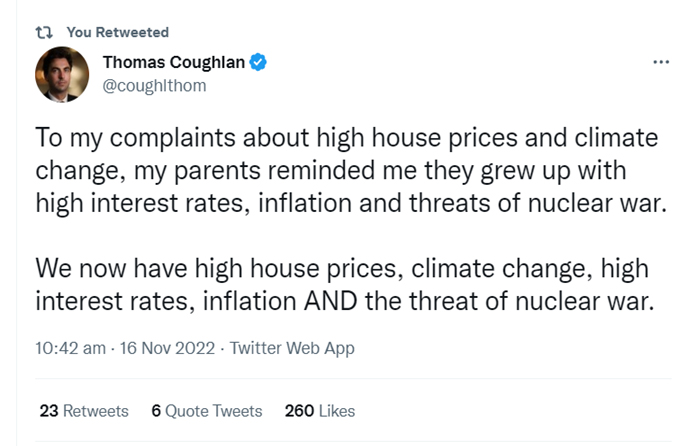
Unaffordable housing because it restricts labour market mobility is making supply constraints worse. Supply constraints is one of the contributions to the high inflation rate. Yet New Zealand will use inflation targeting monetary policy to get inflation back under control because it is a statutory automatic stabiliser. The Reserve Bank has already started to raise interest rates. And given the stubbornly high inflation expectations interest rates will need to be hiked further. This blunt tool will reduce demand throughout the economy — including in some areas where the effect is not helpful — like residential construction. Ideally supply levers — especially those that improve housing supply responsiveness will also be fully engaged.
If New Zealand doesn’t improve supply levers it could face the same problem, it had in the period around the 2007/8 global financial crisis. High interest rates pre GFC (one-year fixed mortgage interest rates peaked at 10% in 2007) were a blunt tool that disproportionately affected the construction sector. This pre GFC situation deteriorated even further post 2008 by financial company failings and a loss of economic confidence. This downturn for the construction industry in total lasted for about a decade (except in Canterbury which had a post-earthquake building boom).
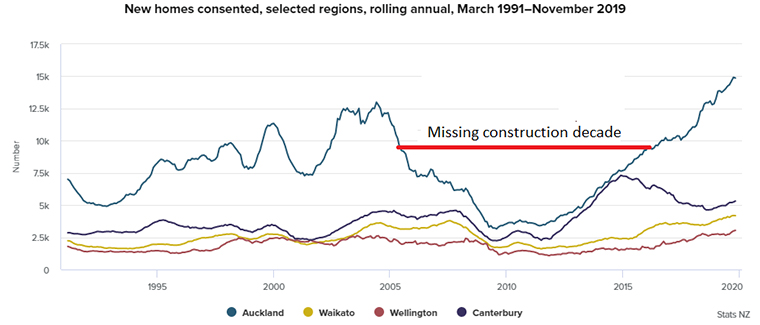
The residential construction industry especially in Auckland had a large downturn between 2005 and 2015. Image source
New Zealand risks going into another construction downturn as a consequence of recent interest rate hikes. Already large residential developers are experiencing a slowdown in sales and are beginning to lay off staff.
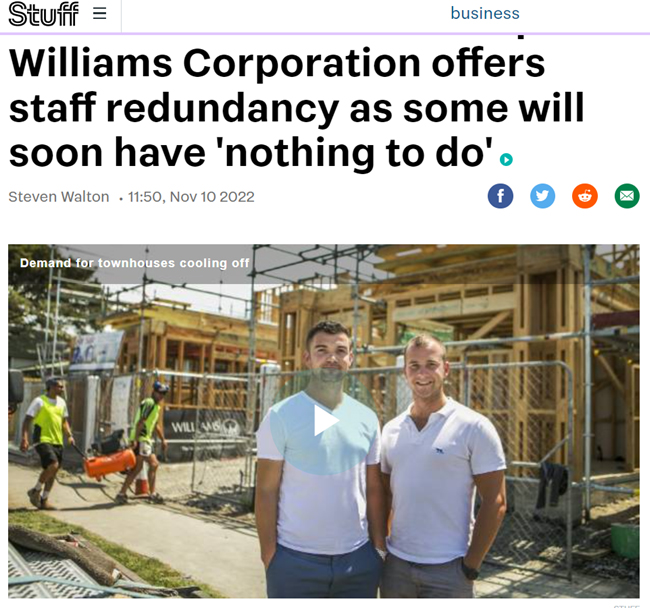
Currently many young workers face an impossible situation accessing affordable housing close to employment. This can be seen in Auckland where a median 25–29 year-old household couple purchasing a lower quartile-priced home with a 10% deposit ($82,000) would need to spend 58.9% of their median take home pay on loan repayments. Even if the couple’s savings meant they had a 20% deposit they would be spending 46.1% of their income on the mortgage. “This is not just making buying a home difficult, it is putting it — beyond the reach of people on average wages.”
It shouldn’t be surprising that even though currently New Zealand has a very low unemployment rate and labour market shortages ranging from hospitals with missing nurses to ghost buses without drivers that people are leaving New Zealand cities. The equation of workers income versus cost of living is completely out of balance.
New Zealand doesn’t just have a problem building houses during the downturn part of the economic cycle. It is a long term chronic issue as recent research from the Infrastructure Commission has determined.
Prices now rise more rapidly because housing supply is slower to respond to demand. We estimate that when demand for housing increases, we now build one-quarter to one-third fewer homes than our grandparents did (Infrastructure Commission — Te Waihanga).
In the last few decades New Zealand experienced a switch in housing demand away from car dependent outer suburbs and towards better connected inner-city areas. Research from the Infrastructure Commission shows this is part of a multi-factor jig-saw that contributed to massive hikes in house prices over a period of many decades.
The Commissions explanation starts with the changing nature of city transport.
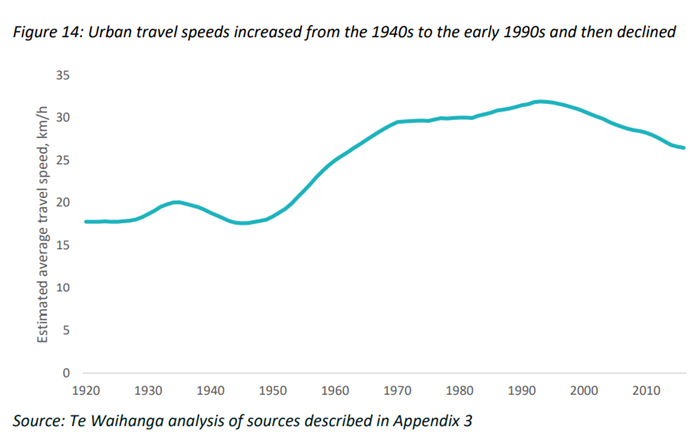
Auckland’s travel speed increased rapidly between 1950 and 1970 due to investment in replacing urban gravel roads with sealed bitumen roads. Speed slowed to a peak in 1990 before congestion caused a decline in average travel times. Meaning Auckland’s sprawling outer suburbs have longer and more congested journeys.
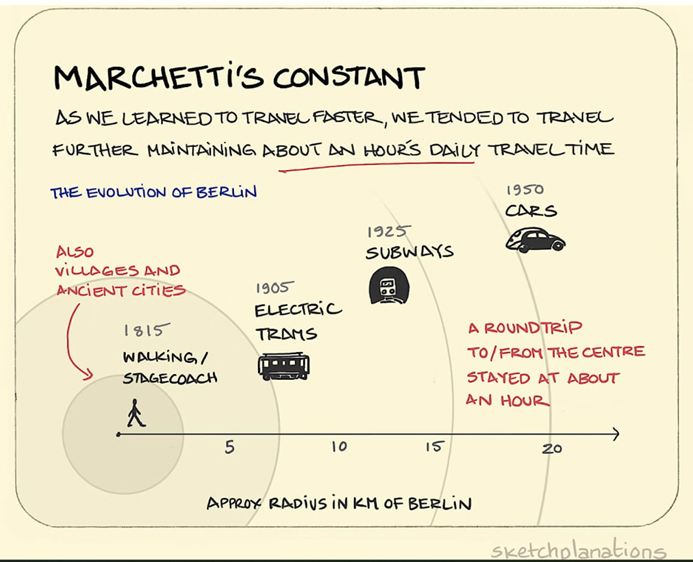
Source: Image adapted from: Marchetti, C., 1994: Anthropological Invariants in Travel Behavior, Technological Forecasting and Social Change
This caused a change in Aucklander’s city location preferences which is not surprising from a urbanism theory perspective. People have daily travel time budgets which they prefer not to exceed. This is called Marchetti’s constant and has been found to be true back into history and across the world.
Another proven urbanism theory — the Downs-Thompson paradox — also helps explain what happened in Auckland. For cities that experience congestion it states that “the equilibrium speed of car traffic on a road network is determined by the average door-to-door speed of equivalent journeys taken by public transport” (or the next best uncongested transport mode alternative)— that people will keep driving until the alternatives are faster (or comparable in time yet more reliable and enjoyable). This video is a good explainer.
In the second half of last century Auckland failed to adapt to the plateauing and then slowing of travel times. It downzoned urban development opportunities, and it did not make timely investments into alternative transport modes. These two mistakes meant housing supply was unresponsive which led to excessive house price increases. A 262% increase between 1978 and 2018 rather than a modelled counterfactual outcome of an 80% increase.
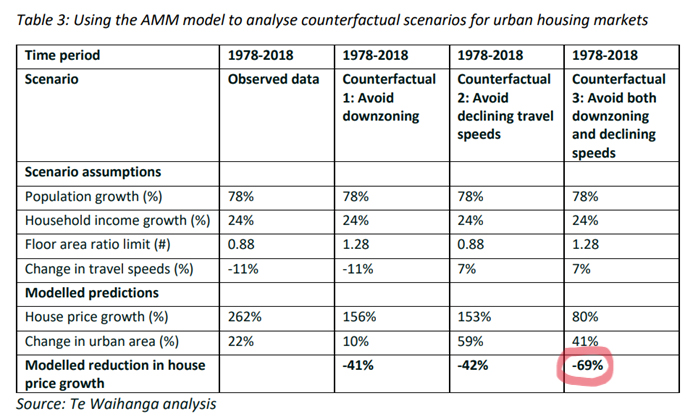
If Auckland had not made these urbanism mistakes, then according to the Infrastructure Commission, house prices could have been 69% lower.
Its research shows that in the long run unresponsive supply has a larger effect on house prices than demand factors, such as, population growth, migration, and income growth. Also probably interest rates, although they note a good long-term data series is lacking for this factor.
Experience should have taught New Zealand the dangers of neglecting urbanism reforms. Hopefully we have learnt this lesson and the new RMA legislation is fully supported so it can be implemented in a sensible and effective manner.
This is a repost of an article here. It is here with permission.
18 Comments
Wow , Brendon ... imagine that ... if we hadn't stuffed up the transportation issues , Orc Land house prices would've only risen 80 % in the 40 years to 2018 ... instead of which , they soared 262 % ...
... Arthur Grimes was right ... we've rooted the market for affordable houses ...
Though I think that cheap credit has added fuel to the fire ... great article ... timely reading on a very moist Saturday : cheers !
I don't know if you've been out to Rangiora lately ... but , it is sprawling across good farmland , with single storey housing ... heading towards Fernside & Kaiapoi ... linking with Woodend / Ravenswood / Waikuku / Pegasus ...its only a matter of time before it's one giant mass of linked subdivisions ... sad ....
Yes I have cycled out on the new bike path to Kaiapoi and Rangiora a few times in the last couple of months.
If Canterbury received the same per capita transport funding as the Wellington region (or just the national average) we could have a far more balanced transport and landuse built environment.
+1 great article.
I'm not sure the NBE & SP Acts are going to help much unless the Government ensures the new rule book is full of National Policy Statements & National Environmental Standards. This was the major downfall of the RMA - the government didnt set the standards so the planners had free reign.
Also the new Acts dont address the critical pricing issues. Car dependent surburbs are still cheaper for people as car travel is so heavily subsidised. We perceive only fuel costs to travel to/from yet the list of cross-subsidised internal and unpaid external costs is massive. Brownfield developments wont be cost competitive unless these costs are addressed.
Case in point - everyone is grumbling about removing the temporary $0.25 / litre subsidy on fuel. The real cost of travel would likely put petrol at over $5.00 / litre.
I don’t quite agree. I think the pendulum is swinging quite far in the direction of brownfield development. One of the major reasons is the cost of infrastructure and therefore development contributions.
In the existing urban area of Auckland development contributions are typically 15-20k per new dwelling. In some of the planned greenfield locations it could be upwards of 80k per dwelling, and then there could also be things like ‘special rates’ applied on top of normal council rates.
Also, we are having a bit of a lull in fuel costs right now but they are quite likely to push up quite high again.
Also, I think increasingly many people value not having a long commute. So it’s not just about the financial cost of living further out, but also the time cost. Although this has certainly been mitigated by the opportunity many people now have to work from home 2-3 days per week.
The government’s planning changes introduced late last year will mean that in about 1.5 years’ time it becomes easier and more feasible to build three storey townhouses and at a ‘more competitive price’. This will also, in my opinion, work in pushing the pendulum more towards brownfields.
I am not so sure that brownfield will become materially cheaper...there are the other costs that Greenfield don't have: currently the upgrade of infrastructure paid for by the developer: drainage systems that are over 60 years old, not maintained and not even correctly recorded, traffic management costs adding thousands to the cost of each build, water and council growth charges that go up well over the price of inflation. Greenfield costs (e.g. Drury) may have an 80k slapped on them but it is a known quantity.
Nonsense, planners have never had free reign. District Plans are community documents that were derived through evidence based decision making processes. The rules like view shafts may seem arbitrary to the author, but their existance is a direct result of community endorsement through plan making. The problem with the RMA was that people thought they could relitigate policy through consenting processes and then got stroppy when they relised their aspirations didn't gel with the community's endorsed position. The same outcomes of the NBA could have been achieved under the RMA if people had bothered to participate in shaping their District Plans.
The viewshaft mentioned is a dopey control and I cant see how it would have passed a proper s32 analysis given the massive economic costs it imposes for very little benefit. More likely its a vestige of the 1970s that has been rolled over. Well past time it was removed.
Oh, crikey, where to start?
- District plans are completely captured by the Planning Staff who write, defend, apply and review them.
- District plans are so complex, occasionally internally inconsistent, verbose and generally tangled, that most large TLA's advise the use of Plan Navigation Consultants to anyone entering the labyrinth. At applicant cost. And pre-aplication meetings, for a Modest Fee.
- District Plans rely on zoneration, spatial distinctions and suchlike, whereas the initial RMA was dreamily conceived as Effects Based. Well, that didnae last....
- So to expect Community Consultation to make Better Plans, untie the Gordian Knot of spatial planning, and generally to lead us into the Sunlit Uplands of effects-based decisions, is tilting at windmills. Which, being large, visible for miles, and cause more than minor Effects, cannot be built....
Your second sentence is laughable. Waymad gives a good breakdown above. But in short, planners come up with these plans, then pretend to consult on them, make basically no changes and then set them in stone. AND THEN have the audacity to say "The community came up with this plan..."
There’s plenty of zoned land for density. In fact much much much more than is even needed.
I am agnostic on some of the volcanic viewshafts, but you seem to have this totally deluded view that getting rid of almost all planning rules will magically provide affordable housing.
Good article but I think there need to be economic incentives in place for councils to encourage densification as well.
What councils have done is seek to pass forward as much of the cost of development to government as is possible. They have had little incentive to implement appropriate zoning.

We welcome your comments below. If you are not already registered, please register to comment.
Remember we welcome robust, respectful and insightful debate. We don't welcome abusive or defamatory comments and will de-register those repeatedly making such comments. Our current comment policy is here.